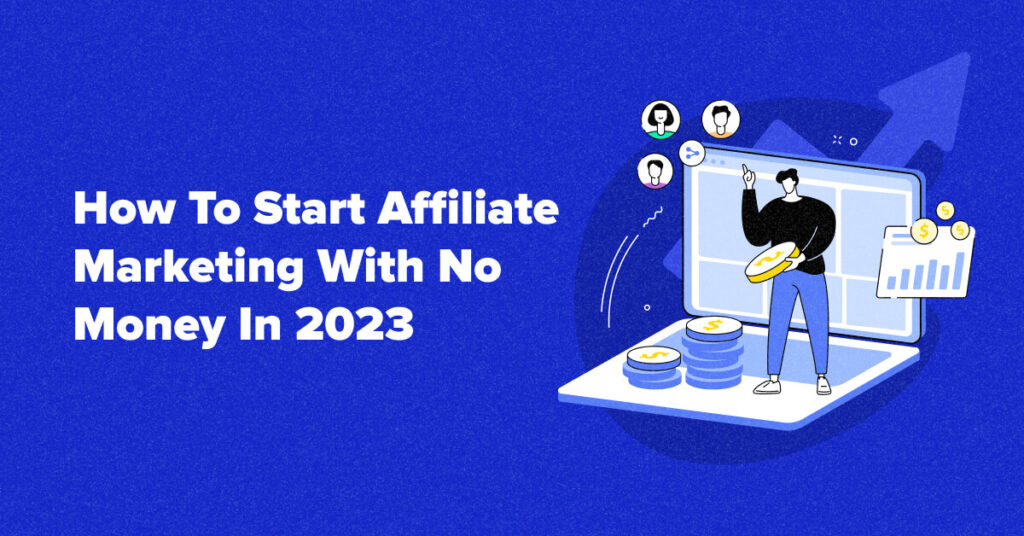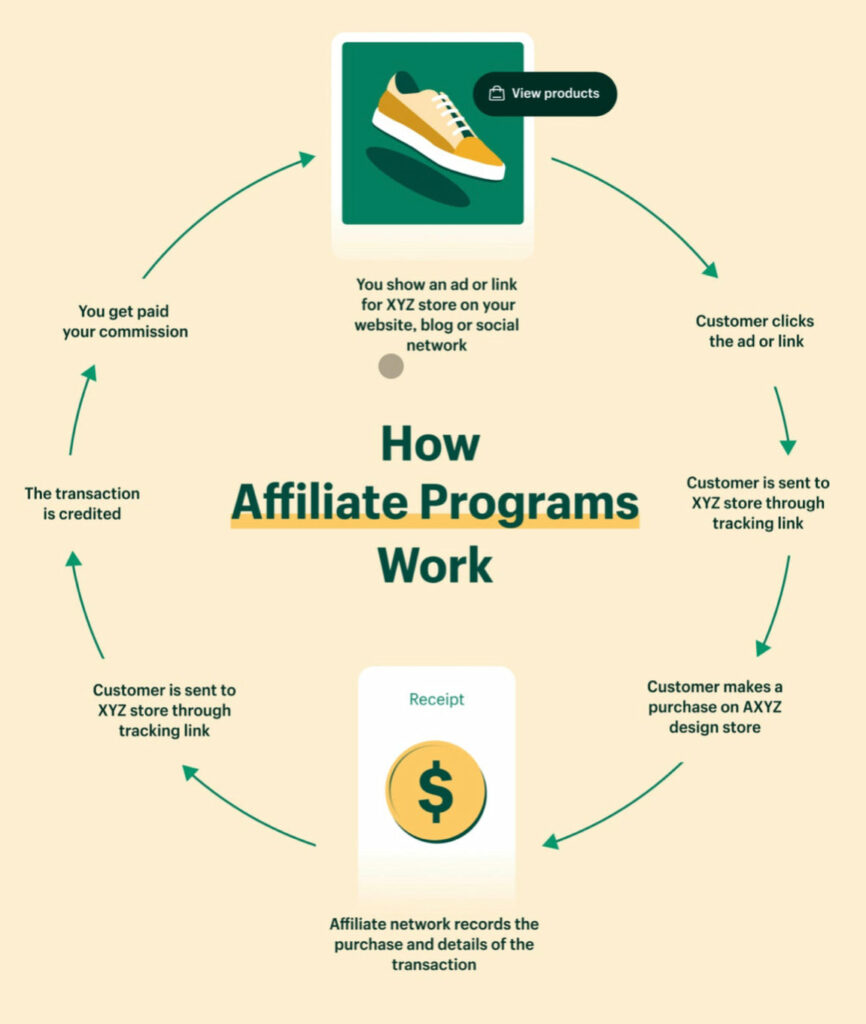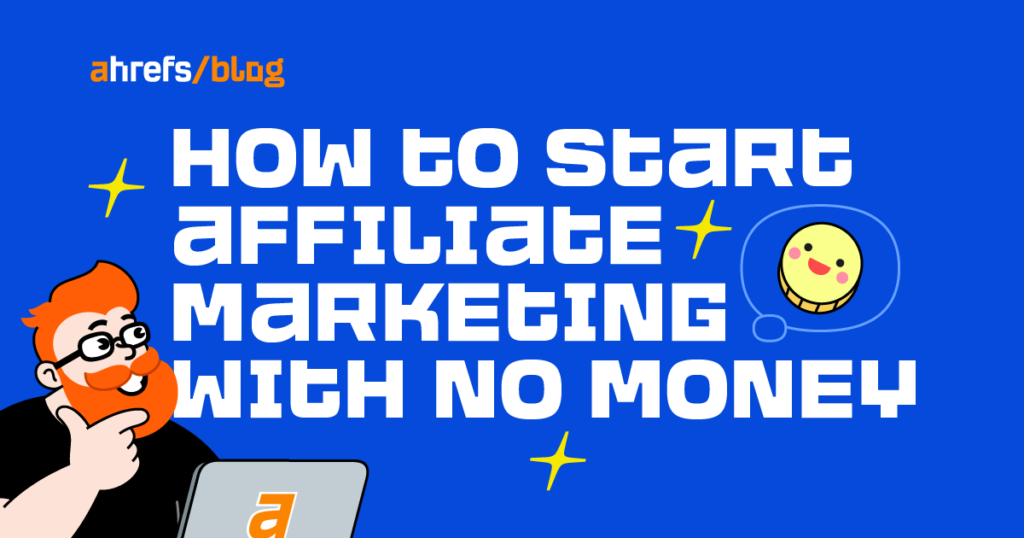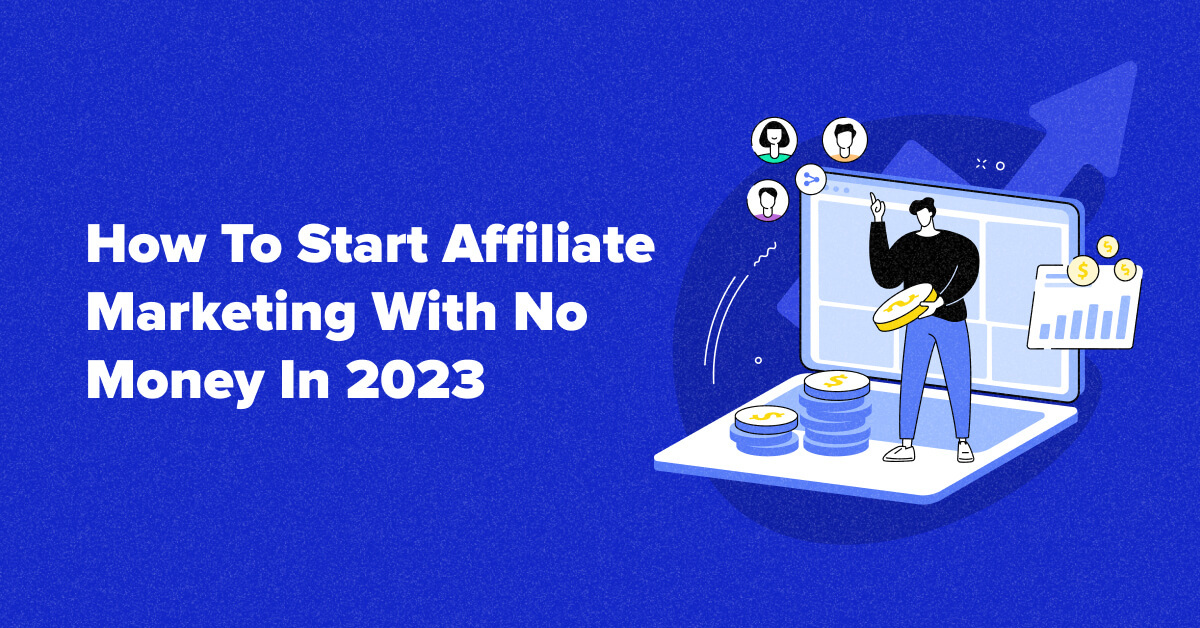Are you interested in becoming an affiliate but worried about not having any money to invest? Don’t worry, in our article, we will share some tips and strategies on how you can become an affiliate without spending a dime. We understand that financial constraints shouldn’t hold you back from pursuing your dreams, and we’re here to help you navigate the affiliate marketing world even on a tight budget.
How Do I Become An Affiliate With No Money?
If you’re curious to know how you can kickstart your affiliate journey without spending any money, you’re in the right place. In our upcoming article, we will provide you with practical steps and actionable advice on how to get started as an affiliate marketer on a shoestring budget. From finding free affiliate programs to leveraging social media platforms and creating valuable content without breaking the bank, we’ll give you all the guidance you need to become a successful affiliate even with limited financial resources. Stay tuned!
Introduction
Becoming an affiliate marketer can be a lucrative opportunity to earn passive income and work from the comfort of your own home. However, many people are discouraged from starting because they believe they need to invest a significant amount of money to get started. The truth is, you can become an affiliate marketer with no money. In this article, we will explore the steps you can take to become an affiliate marketer without spending a dime.
Understanding Affiliate Marketing
Defining affiliate marketing
Affiliate marketing is a performance-based marketing strategy where individuals or businesses promote products or services and earn a commission for each sale or lead they generate. As an affiliate marketer, you act as a middleman between the product owner and the customer, earning a commission on every successful transaction.
How affiliate marketing works
To become an affiliate marketer, you need to find affiliate programs that align with your niche or target audience. You will then sign up as an affiliate and receive a unique affiliate link or code. This link or code is what you will use to track your referrals and earn commissions.
When you promote a product or service using your affiliate link, and someone makes a purchase or performs a specific action through that link, you earn a commission. The commission amount varies depending on the affiliate program and the product or service being promoted.
Benefits of affiliate marketing
Affiliate marketing offers several benefits, which make it an appealing opportunity for those looking to earn money online:
- Low-cost entry: Unlike starting your own business or creating your own products, affiliate marketing allows you to start with little to no investment.
- Passive income potential: Once you’ve established your affiliate marketing strategy, you can earn passive income as your audience continues to purchase products or services through your affiliate links.
- Flexibility: As an affiliate marketer, you have the freedom to work from anywhere and choose your own schedule.
- Wide range of products and niches: Affiliate marketing allows you to choose from a wide variety of niches and products to promote, ensuring that you can find something that aligns with your interests and targeted audience.

Finding Affiliate Programs
Researching different affiliate programs
To become an affiliate marketer with no money, it’s important to research different affiliate programs and find ones that align with your interests and target audience. There are several ways to find affiliate programs:
- Search engines: Conduct a simple search using keywords related to your niche, followed by “affiliate program” or “affiliate marketing.” This will bring up a list of relevant programs that you can explore.
- Affiliate networks: Joining affiliate networks like Amazon Associates, ClickBank, or ShareASale can give you access to a wide range of affiliate programs in various niches.
- Competitor analysis: Look at what your competitors are promoting and find out if they have affiliate programs. This can be a great way to find programs that are already successful and have a proven track record.
Evaluating the popularity and credibility of programs
When researching affiliate programs, it’s important to evaluate their popularity and credibility. Here are a few factors to consider:
- Commission structure: Look at the commission rates offered by the affiliate program. Higher commission rates can mean more earning potential for you.
- Product quality: Ensure that the products or services being offered are of high quality and align with your audience’s needs and preferences. Promoting low-quality products can damage your reputation and hinder your success as an affiliate marketer.
- Affiliate support: Consider the level of support provided by the affiliate program. Do they offer marketing materials, training, or dedicated affiliate managers to help you succeed?
Choosing the right program for your niche
Once you’ve researched various affiliate programs, it’s time to choose the right program for your niche. Focus on programs that offer products or services that resonate with your target audience and are relevant to your niche. By promoting products that align with your audience’s needs, you increase the likelihood of generating sales and earning commissions.
Creating a Website or Blog
Choosing a domain name
To establish a presence as an affiliate marketer, it’s important to create a website or blog. The first step in this process is choosing a domain name. Your domain name should be relevant to your niche and memorable for your audience. Consider using keywords related to your niche within your domain name to improve search engine optimization (SEO) and attract targeted traffic.
Selecting a website platform or blogging platform
Once you have a domain name, you need to choose a website platform or blogging platform to build your website or blog. There are several options available, ranging from free platforms like WordPress.com or Blogger to self-hosted platforms like WordPress.org.
Free platforms are a good option for those starting with no budget, as they provide the basic tools you need to get started. However, keep in mind that free platforms may have limitations on customization and monetization options. If you plan to scale your affiliate marketing business in the future, it’s recommended to invest in a self-hosted platform.
Designing and customizing your website or blog
After selecting a platform, you can start designing and customizing your website or blog. Choose a theme or template that aligns with your niche and audience preferences. Customize the layout, color scheme, and typography to create a visually appealing and user-friendly website or blog.
When creating your website or blog, it’s essential to prioritize user experience. Ensure that your website or blog is easy to navigate, loads quickly, and is mobile-friendly. A positive user experience can lead to higher engagement and increased conversions.

Generating Quality Content
Identifying target audience and preferences
To be successful as an affiliate marketer, you need to understand your target audience. Identify their needs, preferences, and pain points. This will guide your content creation strategy and help you promote products or services that are relevant and valuable to your audience.
Creating engaging and informative content
Once you have a clear understanding of your target audience, it’s time to create engaging and informative content. This can include blog posts, articles, videos, podcasts, or social media posts. Focus on providing valuable information, solving problems, and addressing the needs and interests of your audience.
When creating content, aim for quality over quantity. It’s better to create a few high-quality pieces of content that resonate with your audience than to produce a large volume of mediocre content. Engage your audience through storytelling, visuals, and examples to make your content more compelling and shareable.
Implementing SEO strategies for better visibility
Search engine optimization (SEO) is crucial for driving organic traffic to your website or blog. Implementing SEO strategies can improve your website’s visibility in search engine results and increase your chances of reaching your target audience. Some key SEO techniques include:
- Keyword research and optimization: Identify relevant keywords and incorporate them naturally into your content, titles, headings, and meta descriptions.
- Optimizing meta tags and descriptions: Write compelling and informative meta tags and descriptions that entice users to click on your content in search results.
- Building quality backlinks: Seek opportunities to earn backlinks from reputable websites within your niche. Backlinks can improve your website’s authority and search engine rankings.
By implementing effective SEO strategies, you can attract targeted traffic to your website or blog and increase the likelihood of generating sales through your affiliate links.
Building an Audience and Traffic
Utilizing social media platforms for promotion
Social media platforms are powerful tools for promoting your affiliate marketing content and reaching a wider audience. Identify the social media platforms that your target audience frequents and create a presence on those platforms. Share your content, engage with your audience, and build relationships within your niche community.
Each social media platform has its own best practices and features. For example, Instagram is known for visual content, while Twitter is more focused on short-form updates. Tailor your content and strategies to each platform to optimize engagement and reach.
Creating an email list and utilizing newsletters
Building an email list is an effective way to stay connected with your audience and promote your affiliate offers. Encourage visitors to subscribe to your newsletter by offering valuable content, exclusive offers, or freebies. Once you have an email list, regularly send out newsletters with informative content, product recommendations, and promotional offers.
When crafting email content, focus on providing value and building a relationship with your subscribers. Avoid being too promotional or salesy, as this can lead to high unsubscribe rates. Personalize your emails and make them relevant to each subscriber’s interests and preferences.
Collaborating with influencers or bloggers
Collaborating with influencers or bloggers in your niche can help expand your reach and attract a larger audience. Identify influencers or bloggers who have a similar target audience and reach out to them for potential collaborations. This can include guest blogging, social media collaborations, or joint projects.
When collaborating with influencers or bloggers, it’s important to maintain authenticity and transparency. Choose partners who align with your values and can genuinely promote your affiliate offers. Provide them with clear guidelines and ensure that they disclose their partnership with you to maintain transparency with their audience.

Promoting Affiliate Products
Identifying relevant and high-converting products
To earn commissions as an affiliate marketer, you need to identify relevant and high-converting products or services to promote. Consider your target audience’s needs and preferences when selecting products. Look for products that have a proven track record of sales and positive customer reviews.
Affiliate networks and online marketplaces like Amazon Associates and ClickBank offer a wide range of products across various niches. Research product popularity and sales statistics within these platforms to identify products that have high conversion rates.
Writing compelling product reviews
Product reviews are a powerful way to promote affiliate products and educate your audience about their benefits. When writing product reviews, focus on the features, advantages, and disadvantages of the product. Be honest and unbiased in your review to maintain trust with your audience.
Include personal experiences, case studies, or testimonials to make your review more authentic and relatable. Use visuals like images or videos to demonstrate the product’s functionality or results. Finally, always include your affiliate link within the review, making it easy for your audience to make a purchase if they find the product appealing.
Implementing effective call-to-action strategies
A strong call-to-action (CTA) is essential to encourage your audience to click on your affiliate links and make a purchase. Engage your audience with compelling CTAs that create a sense of urgency or appeal to their emotions. Some effective CTA strategies include:
- Limited-time offers: Create a sense of urgency by offering limited-time promotions or discounts.
- Bonus incentives: Provide additional bonuses or exclusive content to those who purchase through your affiliate links.
- Social proof: Highlight positive customer reviews or testimonials to build trust and credibility.
By implementing effective CTAs, you can increase the click-through rate and conversion rate of your affiliate links.
Utilizing SEO Techniques
Keyword research and optimization
Keyword research is the process of identifying the keywords and phrases that your target audience uses when searching for information or products related to your niche. Use keyword research tools like Google Keyword Planner or SEMrush to find relevant keywords with high search volumes and low competition.
Once you have identified your target keywords, incorporate them naturally into your content, including titles, headings, and throughout your article. However, it’s crucial to avoid keyword stuffing, as this can negatively impact your search engine rankings.
Optimizing meta tags and descriptions
Meta tags and descriptions are HTML elements that provide information about your web page to search engines and users. Optimizing your meta tags and descriptions can improve your website’s visibility and click-through rate in search engine results.
Write compelling and informative meta tags and descriptions that accurately describe the content of your page. Include relevant keywords and communicate the value or benefits of your content to entice users to click on your page.
Building quality backlinks
Backlinks are links from other websites to your website. They play a significant role in search engine rankings and can improve your website’s authority and visibility. Building quality backlinks is a long-term strategy that requires time and effort.
Seek opportunities to earn backlinks from reputable websites within your niche. This can be done through guest posting, collaborating with influencers, or providing valuable content that others naturally link to. Focus on building authoritative and relevant backlinks rather than quantity.

Exploring Social Media Marketing
Understanding different social media platforms
To effectively utilize social media marketing, it’s essential to understand the different platforms and their unique features. Each social media platform has its own strengths and user demographics. Some popular platforms include:
- Facebook: A versatile platform for sharing different types of content, targeting specific demographics, and running paid advertising campaigns.
- Instagram: Known for visual content and influencers, Instagram is popular among younger audiences and those interested in lifestyle, fashion, or travel.
- Twitter: A platform for short and timely updates, Twitter is ideal for engaging with your audience, sharing quick tips or insights, and participating in industry conversations.
Choose the social media platforms that are popular within your niche and align with your target audience’s preferences. Consistently engage with your audience, share your affiliate content, and provide value through your social media presence.
Creating engaging and shareable content
Social media platforms thrive on engaging and shareable content. To increase your reach and engagement, create content that is informative, entertaining, or inspiring. Use attention-grabbing headlines, visuals, and captions to capture your audience’s attention and encourage them to share your content with their network.
Visual content, such as images, videos, or infographics, tends to perform well on social media platforms. Experiment with different formats and styles to find what resonates best with your audience. Interactive content, contests, or quizzes can also boost engagement and encourage sharing.
Utilizing targeted advertising
Most social media platforms offer targeted advertising options that allow you to reach specific demographics or audiences. Utilizing targeted advertising can help you promote your affiliate content to the right people and maximize your return on investment.
When running targeted ads, define your target audience based on demographics, interests, or behaviors. Craft compelling ad copy and visuals that clearly communicate the benefits of your affiliate offers. Monitor your ad performance regularly, make adjustments as needed, and optimize your campaigns based on data and insights.
Driving Organic Traffic
Implementing on-page and off-page SEO
To drive organic traffic to your website or blog, it’s important to implement both on-page and off-page SEO techniques.
On-page SEO focuses on optimizing the content and structure of your website. This includes optimizing your titles, headings, URLs, and content with relevant keywords. Use internal linking to make it easier for users and search engines to navigate your website.
Off-page SEO refers to activities done outside of your website to improve its visibility and backlink profile. This includes earning backlinks from reputable websites through guest posting, social media collaborations, or influencer partnerships.
Guest posting on relevant websites
Guest posting is an effective way to build backlinks and drive traffic to your website or blog. Identify reputable websites within your niche that accept guest posts and offer valuable content to their audience. Write guest posts that showcase your expertise and provide insights or solutions related to your niche.
When guest posting, include a link to your website or blog in your author bio or within the content itself. This allows readers to visit your website and discover your affiliate content. Ensure that your guest posts are well-written, informative, and provide value to the host website’s audience.
Participating in online forums and communities
Joining online forums and communities related to your niche can help you establish your authority, build relationships, and drive traffic to your website. Participate in discussions, answer questions, and provide valuable insights or advice within these communities.
When engaging in forums or online communities, avoid being overly promotional or spammy. Instead, focus on contributing to the conversation and genuinely helping others. Include a link to your website or blog in your forum profile or when relevant to the discussion. This can pique curiosity and encourage members to visit your website.

Creating Email Campaigns
Building an email list
Building an email list is essential for effectively promoting your affiliate offers and nurturing relationships with your audience. To build an email list, create opt-in forms or lead magnets on your website or blog. Offer valuable content, exclusive discounts, or freebies in exchange for visitors’ email addresses.
Place opt-in forms strategically throughout your website to maximize visibility and sign-ups. Use compelling copy and visuals to entice visitors to subscribe to your newsletter. Ensure that your subscribers understand the value they will receive by joining your email list.
Crafting effective email content
Crafting effective email content is crucial to engage your audience and persuade them to take action. Consider the following tips when creating your email content:
- Personalization: Address your subscribers by their first name and personalize the content based on their preferences or previous interactions with your website.
- Clear and concise subject lines: Write subject lines that intrigue and entice subscribers to open your emails.
- Valuable content: Provide valuable information, tips, or insights within your emails to keep your subscribers engaged and build trust.
- Call-to-action: Clearly communicate the action you want your subscribers to take, whether it’s clicking on an affiliate link, making a purchase, or signing up for a free trial.
Segment your email list based on subscribers’ interests or demographics. This allows you to send targeted emails that are relevant to each segment, increasing the likelihood of engagement and conversions.
Measuring and analyzing campaign success
To measure and analyze the success of your email campaigns, utilize email marketing analytics tools. Platforms like Mailchimp, ConvertKit, or AWeber provide valuable insights into your email performance, such as open rates, click-through rates, and conversions.
Regularly review your email campaign data and identify trends or patterns. This will help you understand what types of emails or content resonate best with your audience. Use this information to optimize your future email campaigns and improve your overall conversion rates.
Tracking and Analyzing Performance
Choosing the right analytics tools
Tracking and analyzing the performance of your affiliate marketing efforts is crucial to identify areas for improvement and maximize your results. There are various analytics tools available that can help you monitor and analyze your affiliate program performance.
Google Analytics is a powerful tool for tracking website traffic, user behavior, and conversions. It provides insights into which channels, keywords, or campaigns are driving the most traffic and conversions to your website.
In addition to Google Analytics, many affiliate networks offer their own analytics tools. These tools provide detailed information about your affiliate links’ performance, including clicks, conversions, and commission earned. Use these analytics tools to assess the effectiveness of your affiliate marketing strategies and make data-driven decisions.
Monitoring affiliate program performance
When promoting affiliate products, it’s important to monitor the performance of your affiliate programs. Regularly check your affiliate program dashboard and analyze the data provided. Pay attention to metrics such as clicks, conversions, conversion rate, and earnings.
Identify which products or promotions are generating the most sales or commissions for you. This will help you focus your efforts on the most successful campaigns and improve your overall performance as an affiliate marketer.
Identifying areas for improvement
As you track and analyze the performance of your affiliate marketing efforts, you may identify areas for improvement. This can include optimizing underperforming content, adjusting your promotional strategies, or targeting different keywords or audience segments.
Experiment with different approaches and strategies to see what works best for your audience and niche. Continuously evaluate your affiliate marketing performance and adapt your strategies based on data and insights.
Scaling Your Affiliate Business
Expanding your product range
Once you have established yourself as an affiliate marketer, consider expanding your product range to increase your earning potential. Research and identify complementary products or services that align with your existing niche and audience.
By offering a wider range of products or services, you can cater to different segments of your audience and increase the likelihood of generating sales. Be mindful of promoting too many products simultaneously, as it can dilute your focus and confuse your audience. Instead, strategically select products that serve as natural extensions of your existing offerings.
Diversifying traffic sources
Relying on a single traffic source can be risky as it puts your affiliate business at the mercy of algorithm changes or platform policies. To mitigate this risk, diversify your traffic sources by exploring different channels and strategies.
In addition to organic traffic from search engines, actively promote your affiliate content through social media platforms, email marketing, guest posting, or partnerships with influencers or bloggers. Experiment with paid advertising to reach wider audiences and drive targeted traffic to your website or blog.
By diversifying your traffic sources, you reduce dependence on a single channel and increase the stability and scalability of your affiliate business.
Building partnerships and collaborations
Building partnerships and collaborations within your niche can help you expand your reach and tap into new audiences. Seek opportunities to collaborate with influencers, bloggers, or complementary businesses to promote each other’s content or products.
Collaborations can include guest blogging, joint projects, social media shoutouts, or hosting webinars or events together. These partnerships allow you to leverage each other’s audience and mutually benefit from increased exposure and traffic.
When building partnerships, prioritize long-term relationships and seek partners who align with your values and target audience. Regularly evaluate the success of your collaborations and explore new opportunities to expand your affiliate business.
Conclusion
Becoming an affiliate marketer with no money is achievable if you are willing to put in the time and effort to build your online presence and attract an audience. By understanding the basics of affiliate marketing, exploring different affiliate programs, creating compelling content, and utilizing various marketing strategies, you can start earning passive income as an affiliate marketer. Remember to continuously track and analyze your performance, identify areas for improvement, and adapt your strategies based on data and insights. With patience, perseverance, and a friendly tone, you can successfully become an affiliate with no money and turn it into a profitable online business.
